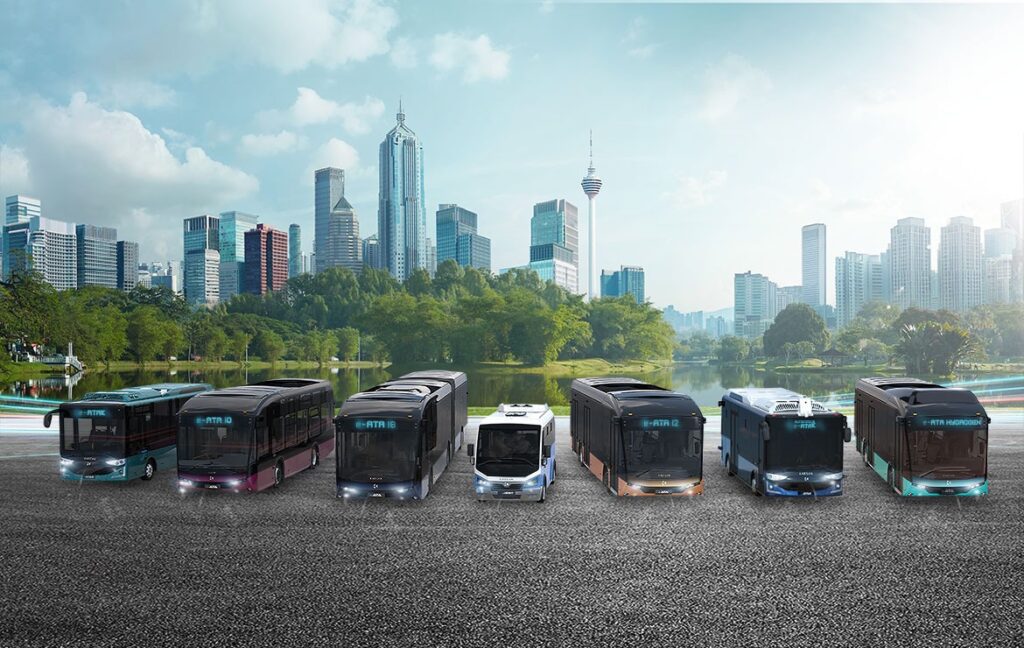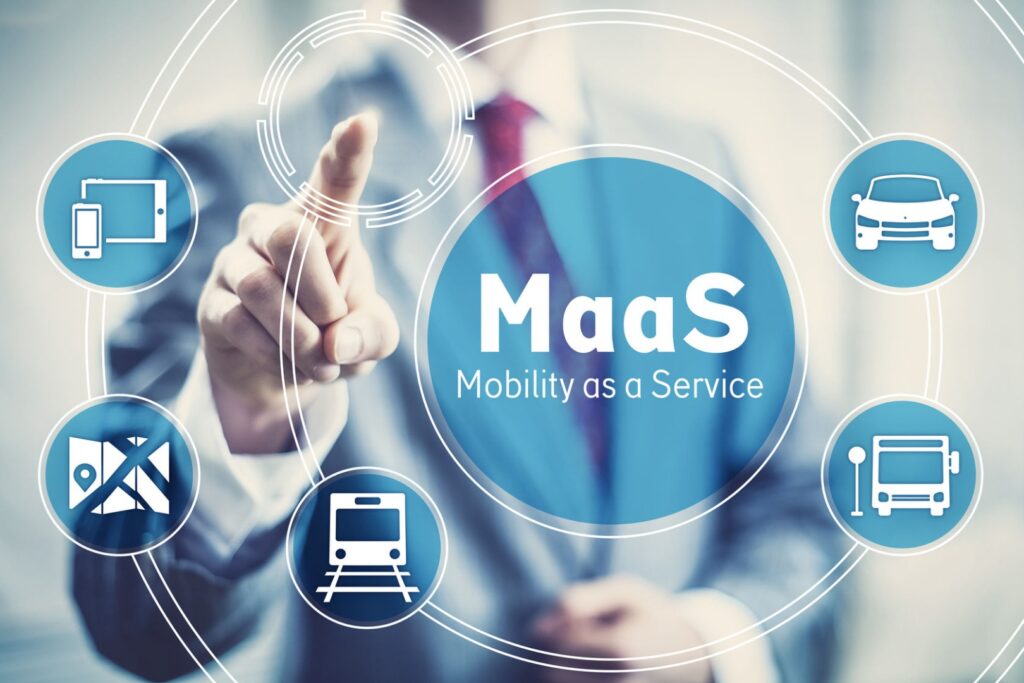1. Introduction
Cities around the world are facing growing challenges in public transportation, from increasing traffic congestion to rising pollution and the need for greater accessibility. As urban populations expand, the demand for efficient, sustainable, and reliable mobility solutions has never been higher. One technology that promises to address these issues is the autonomous bus—a self-driving, often electric-powered, public transport vehicle designed to operate with minimal or no human intervention.
By combining artificial intelligence (AI), advanced sensors such as lidar and radar, GPS navigation, and Vehicle-to-Everything (V2X) communication, autonomous buses can navigate complex city environments safely and efficiently. They have the potential to reduce human error, optimize routes in real time, and operate continuously, making public transport more dependable.
Around the globe, pilot programs are already demonstrating how autonomous buses can enhance urban mobility while lowering operational costs and environmental impact. This article explores what autonomous buses are, their advantages, real-world deployments, adoption challenges, and the innovations shaping their future in sustainable urban transport.
2. What Are Autonomous Buses?
Autonomous buses are self-driving public transport vehicles designed to operate without direct human control. Using advanced technologies such as artificial intelligence (AI), lidar sensors, radar, GPS navigation, and Vehicle-to-Everything (V2X) communication, these buses can detect their surroundings, plan routes, and respond to traffic conditions in real time.
Unlike traditional buses driven by human operators, autonomous buses rely on a combination of cameras, sensors, and machine learning algorithms to “see” the road, recognize traffic signals, avoid obstacles, and ensure passenger safety. They are programmed to follow precise schedules, adjust routes when needed, and operate efficiently in both busy city streets and quieter suburban areas.
There are different automation levels, ranging from semi-autonomous systems that assist a human driver to fully autonomous buses (SAE Level 5) that require no driver at all. Many of today’s pilot programs are at Levels 3 and 4, where the vehicle can handle most driving tasks but still has an operator for safety oversight.
Autonomous buses are often integrated with electric power systems, making them a greener alternative to diesel buses. This combination of automation and clean energy reduces carbon emissions, lowers operational costs, and helps cities move toward sustainable mobility goals.
In short, autonomous buses represent the next big step in urban mobility innovation, promising safer, cleaner, and more efficient public transportation for the future.
3. Advantages of Autonomous Buses in Urban Mobility
Autonomous buses are emerging as a game-changer in public transport, offering a range of benefits that address many of today’s urban mobility challenges. By combining automation with smart technologies, these buses can significantly improve safety, efficiency, and accessibility in cities.
Improved Safety
One of the biggest advantages is the reduction of accidents caused by human error. Autonomous buses use lidar, radar, and AI-powered navigation systems to detect pedestrians, cyclists, and other vehicles with high accuracy. They can respond instantly to hazards, maintain safe distances, and strictly follow traffic rules.
Operational Efficiency
Automation enables precise scheduling and route optimization. Autonomous buses can adapt to real-time traffic data, avoid congested areas, and reduce travel delays. With no driver fatigue, they can operate longer hours, increasing service availability.

Environmental Benefits
Most autonomous bus projects are paired with electric or hybrid power systems. This shift to green public transportation reduces carbon emissions, lowers fuel costs, and supports city sustainability targets. Optimized driving patterns also improve energy efficiency.
Accessibility and Inclusivity
Autonomous buses can serve areas where traditional public transport is limited, improving access for underserved communities. They can also be designed with enhanced features for elderly passengers and people with disabilities, making travel more inclusive.
Cost Reduction
While initial investment is high, long-term savings come from reduced labor costs, lower fuel expenses, and fewer accidents. Predictive maintenance systems help prevent costly breakdowns, further reducing operating expenses.
By enhancing safety, reducing environmental impact, and improving access to mobility, autonomous buses have the potential to transform public transport systems worldwide. They offer a vision of cleaner, smarter, and more reliable urban travel—benefiting both passengers and the planet.
4. Global Case Studies and Pilot Projects
Around the world, cities are experimenting with autonomous buses to improve public transport efficiency, reduce environmental impact, and test the readiness of smart mobility systems. These pilot projects offer valuable insights into how autonomous buses perform in real-world conditions.
Singapore – Smart Mobility Trials
Singapore’s Land Transport Authority has launched multiple autonomous bus trials in partnership with companies like Volvo and ST Engineering. These buses operate in controlled environments and are gradually being tested on public roads, focusing on safety, reliability, and passenger comfort.
Sweden – Self-Driving Shuttles in Stockholm
Stockholm has deployed small autonomous electric shuttles in selected districts. Operated by Nobina, these buses connect residential areas to main transport hubs, showcasing how autonomous mobility can fill first-mile and last-mile gaps.
China – Smart City Bus Deployments
Cities like Shenzhen and Beijing have rolled out autonomous buses equipped with lidar and AI-driven navigation. These buses operate on fixed routes within smart city zones, fully integrated with traffic light systems for smooth operation.
North America and Europe – Pilot Programs
In the U.S., cities such as Las Vegas and Arlington, Texas, have tested autonomous shuttles in urban areas. In Europe, countries like France, Germany, and Finland have introduced short-route autonomous bus services to evaluate public acceptance and infrastructure compatibility.
These global case studies show that autonomous buses are not a distant concept—they are already operational in multiple cities. The lessons learned from these trials are helping refine technology, improve safety systems, and prepare regulations, paving the way for broader adoption in the coming years.
5. Challenges and Barriers to Adoption
While autonomous buses hold great promise for transforming urban mobility, their widespread adoption faces several challenges that cities and operators must address.
Regulatory and Legal Hurdles
Regulations for autonomous vehicles vary significantly across countries and even cities. Establishing safety standards, liability rules, and operating guidelines is essential before large-scale deployment. The lack of uniform legislation slows adoption and creates uncertainty for operators.
Public Trust and Safety Concerns
Passengers may be hesitant to ride in a bus without a human driver. Concerns about system failures, hacking, or accidents can hinder acceptance. Building trust through transparent testing, demonstrations, and safety records is key.
Infrastructure Readiness
Autonomous buses require smart infrastructure, including V2X communication systems, high-quality road markings, and dedicated charging stations for electric fleets. Upgrading existing infrastructure can be costly and time-consuming.
Cybersecurity Risks
Connected vehicles are vulnerable to hacking attempts, which could disrupt operations or compromise passenger safety. Strong encryption, intrusion detection, and constant monitoring are critical to prevent cyber threats.
High Initial Investment
Purchasing autonomous buses, installing necessary infrastructure, and integrating fleet management systems require substantial funding. While operational costs may decrease over time, the upfront expenses can be a significant barrier, especially for smaller cities.
Operational Limitations
Extreme weather, complex traffic conditions, and unpredictable pedestrian behavior can challenge the sensors and AI systems used in autonomous buses. Until technology advances further, human oversight may still be needed in certain environments.
Overcoming these challenges will require collaboration between governments, technology providers, and transport operators, ensuring that autonomous buses can operate safely, efficiently, and with public confidence.
6. Future Trends and Innovations
The future of autonomous buses is closely tied to advancements in smart mobility, clean energy, and urban infrastructure. As technology matures, several key trends and innovations are expected to shape the next generation of public transport.
Integration with Mobility-as-a-Service (MaaS)
Autonomous buses will increasingly become part of MaaS platforms, where passengers can plan, book, and pay for multi-modal trips through a single app. This seamless integration will improve convenience and encourage greater use of public transport.

AI and Predictive Analytics
Artificial intelligence will enhance route planning, passenger demand forecasting, and traffic management. Predictive analytics can adjust schedules in real time based on events, weather, or congestion, ensuring smoother operations.
Fully Electric, Zero-Emission Fleets
Most future autonomous buses will be electric or hydrogen-powered, helping cities reduce greenhouse gas emissions. Coupled with optimized driving patterns, this will contribute to cleaner air and quieter streets.
V2X Communication and Smart Infrastructure
Vehicle-to-Everything communication will allow buses to interact with traffic lights, other vehicles, and road infrastructure for safer, more efficient journeys. Smart roads with embedded sensors will further improve navigation and safety.
Enhanced Passenger Experience
Future autonomous buses will offer connected services such as onboard Wi-Fi, infotainment systems, real-time journey updates, and accessibility features tailored to passengers with special needs.
Urban Planning Integration
Cities will design transport networks with autonomous mobility in mind, creating dedicated lanes, optimized bus stops, and charging hubs to maximize efficiency.
These innovations will transform autonomous buses from experimental projects into a mainstream, sustainable, and highly efficient mode of urban transport, playing a vital role in shaping smarter and greener cities.
7. Conclusion
Autonomous buses are set to revolutionize urban mobility by offering safer, cleaner, and more efficient public transportation. Through advanced technologies like AI, lidar, V2X communication, and electric propulsion, they address key challenges such as congestion, emissions, and accessibility gaps. Global pilot projects in cities from Singapore to Stockholm demonstrate their potential to integrate seamlessly into existing transport networks while improving service quality.
However, widespread adoption will require overcoming regulatory hurdles, building public trust, upgrading infrastructure, and ensuring cybersecurity. With continuous innovation and collaboration between governments, technology providers, and transport operators, these challenges can be addressed effectively.
Looking ahead, autonomous buses will likely become a cornerstone of sustainable urban transport, offering a reliable, eco-friendly, and inclusive travel option for millions. Cities that embrace this shift early will be better positioned to lead in the smart mobility era.



